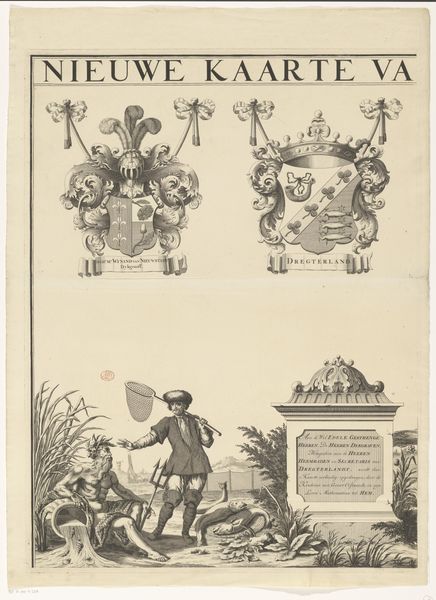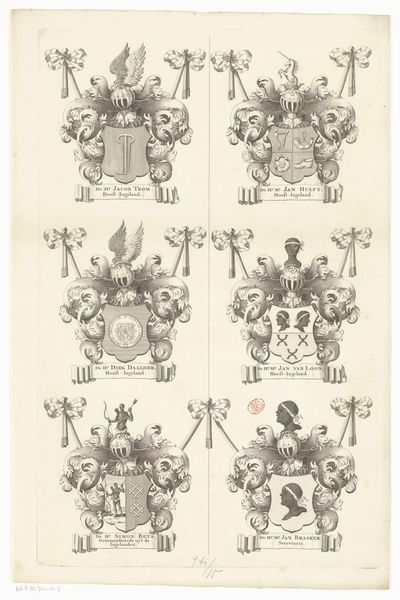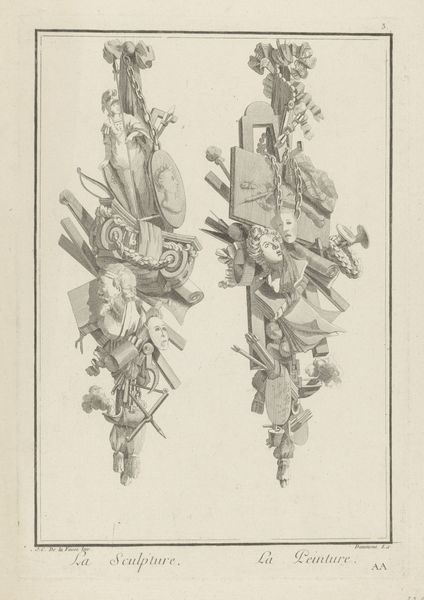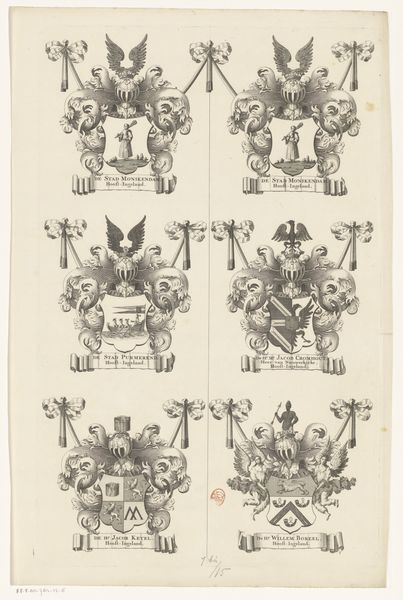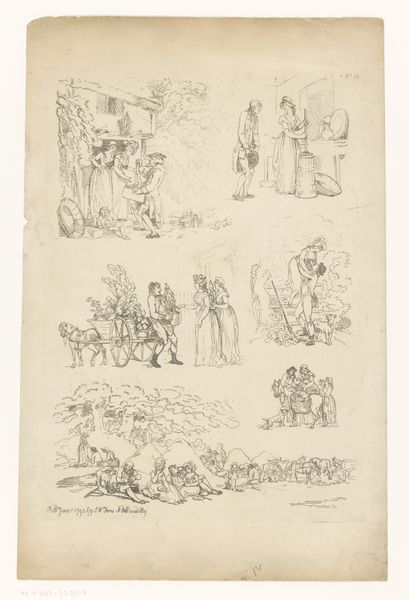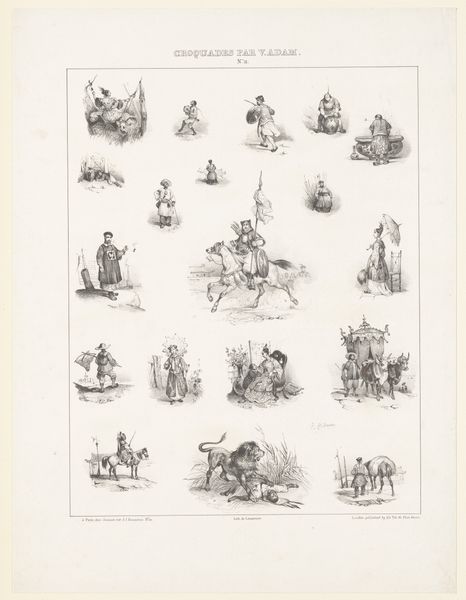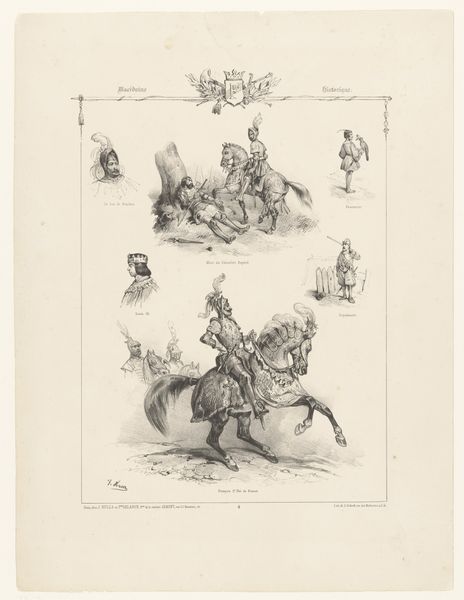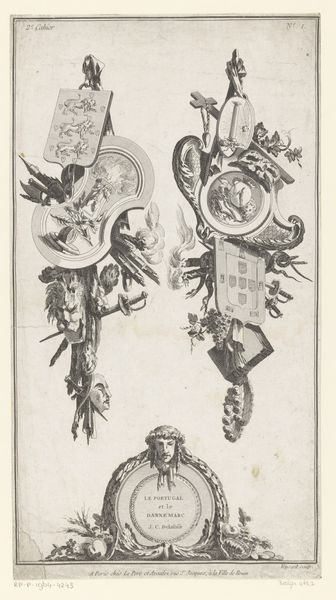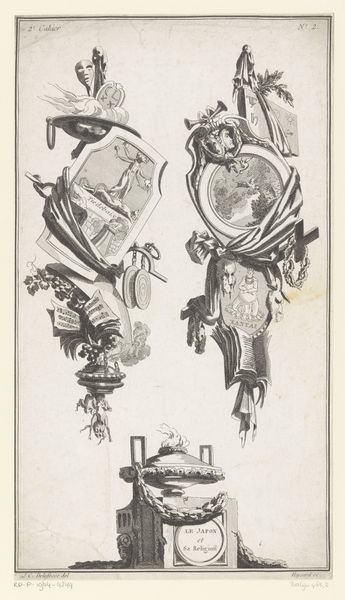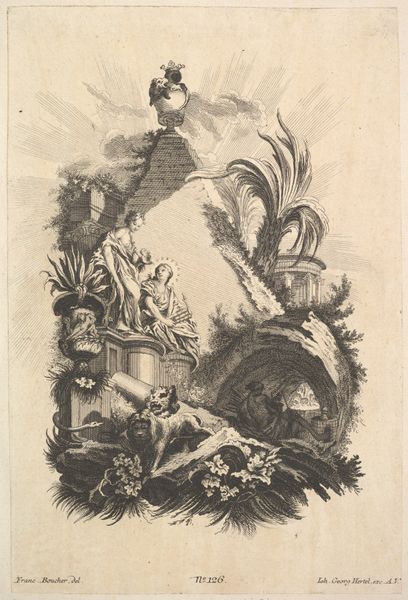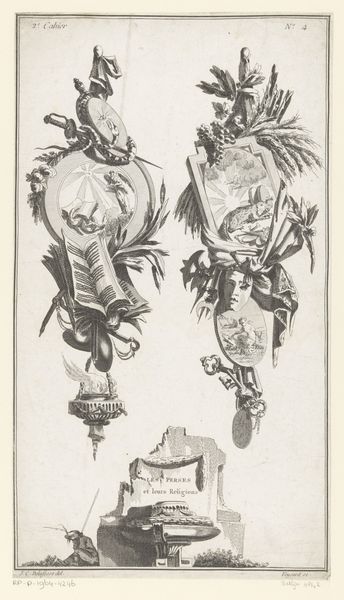
Kaart van het dijkgraafschap Drechterland (tweede deel van boven) after 1723
0:00
0:00
hendrikdeleth
Rijksmuseum
drawing, print, pen, engraving
#
portrait
#
drawing
#
baroque
#
pen drawing
# print
#
pen sketch
#
old engraving style
#
landscape
#
pen-ink sketch
#
pen work
#
pen
#
history-painting
#
engraving
Dimensions: height 670 mm, width 504 mm
Copyright: Rijks Museum: Open Domain
Curator: I find myself drawn in by the graphic quality of this print; it has this quiet, yet undeniably potent energy to it. Editor: It certainly does. This is “Kaart van het dijkgraafschap Drechterland (tweede deel van boven),” or “Map of the polder Drechterland (second part from above),” created after 1723. The artist is Hendrik de Leth. Curator: It's a feast for the eyes. There is something delightfully eccentric about its structure. Are those crests at the top? And then, these pastoral vignettes almost like marginalia… Editor: Precisely! These are family crests, signaling ownership and power within the water board, quite literally a statement about controlling the landscape and who benefits from that control. This polder, like much of the Netherlands, exists because of extensive human intervention. This print, like many maps, is inherently political. Curator: Maps as propaganda, as narratives of power... right. And those figures below? I feel this subtle tension, like we are supposed to idealize this almost staged image of rural prosperity. The figures seem rather posed for all the agrarian plenty they are supposedly enjoying. Editor: That is the Baroque aesthetic at work— everything meticulously placed and symbolically charged. These figures represent the fruits, quite literally, of a managed landscape, hinting at themes of gender and labor woven into the region's economic engine. The man's position and placement feel very much in dialogue with the two women. What do you make of it? Curator: I’m not so sure what story the print wants to tell here. Instead, I’m left to imagine a tale of land ownership, hierarchy, hard work, and possibly hidden desires under all these complex signs, perhaps not so different from today. It seems that control is often portrayed through these intricate details and the idealized views imposed on everyday lives. Editor: Absolutely. By displaying these crests above bucolic images of land, resources, and idealized community, this work is very successful at portraying the economic interests embedded into the land. Hopefully our conversation illuminates those elements just a little further. Curator: Indeed! Perhaps a closer examination will offer further insights into the power dynamics inherent in this region's history.
Comments
No comments
Be the first to comment and join the conversation on the ultimate creative platform.
